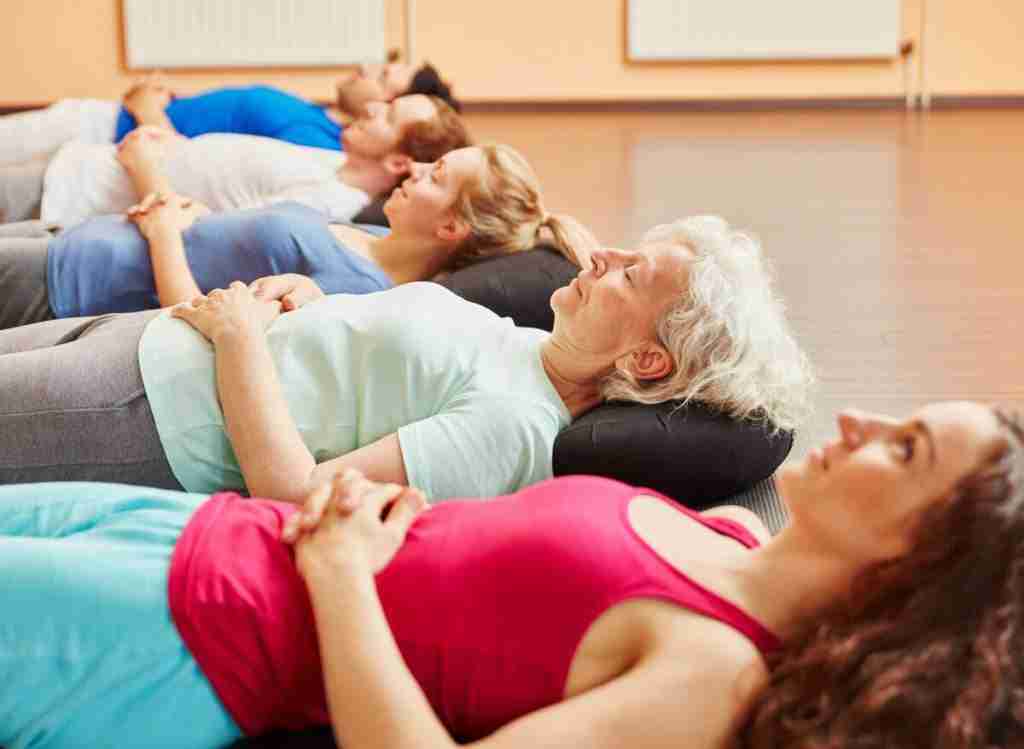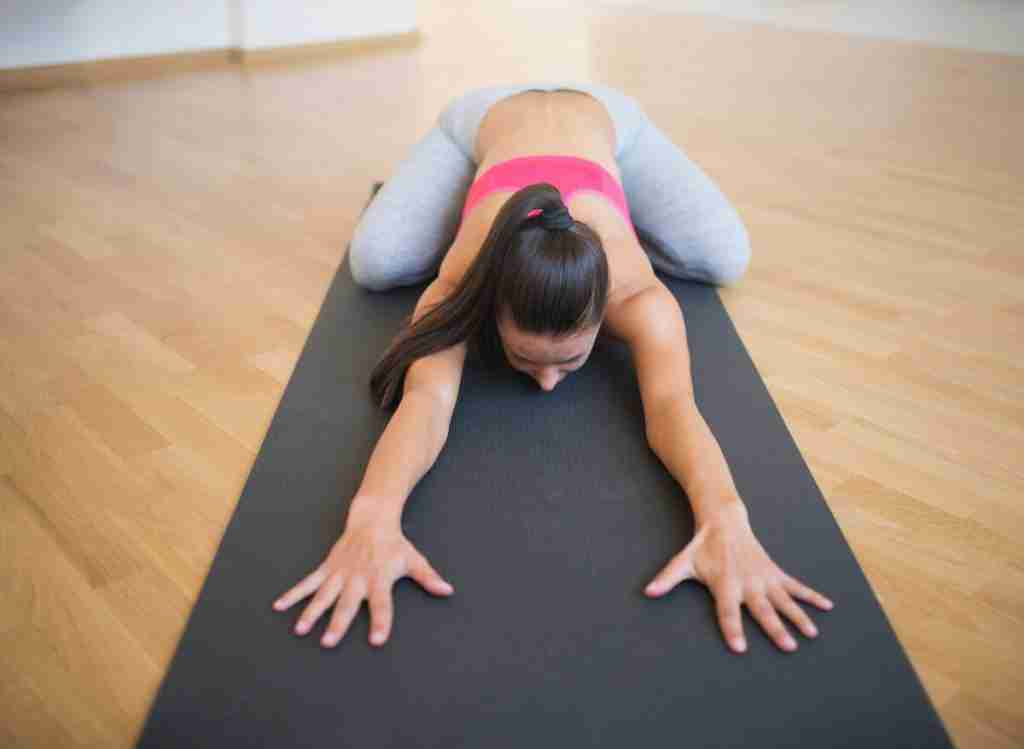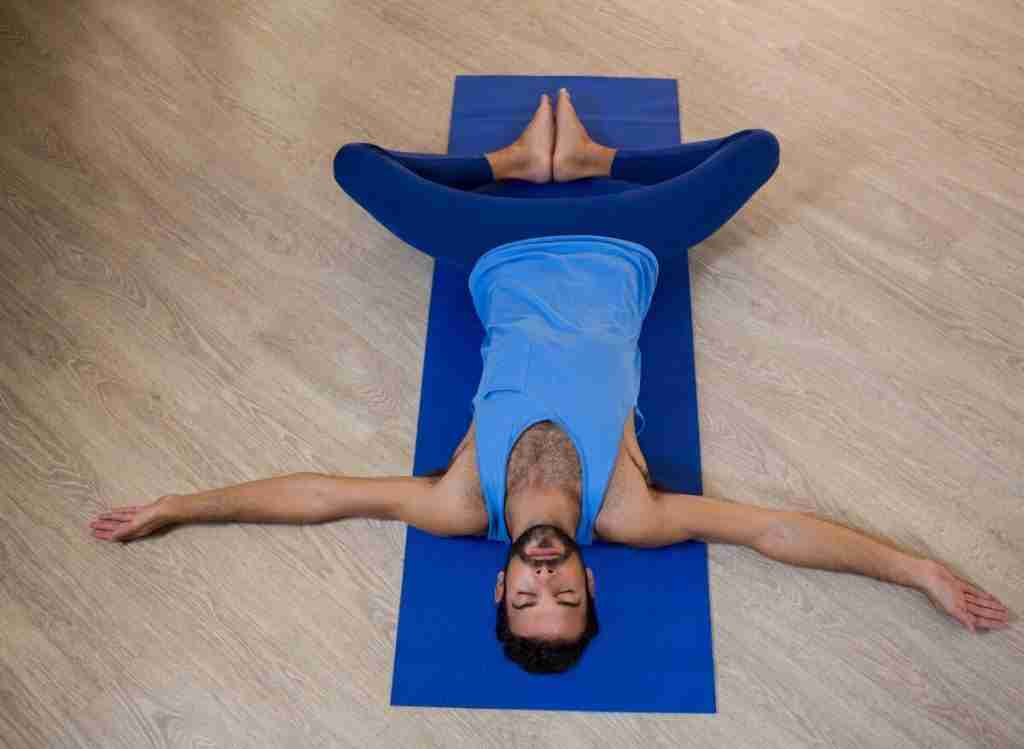
We hear a lot about how fitness and meditation can make you feel energetic and ready to face the day. So, what’s the deal with you being weary after yoga? Most of us think of yoga as a restorative exercise that will clear our minds, purify our bodies, and provide us with joy and vitality. However, this isn’t always the case, and sometimes you just feel sleepy after your yoga practice, so can you sleep after yoga?
You can sleep after yoga or take a short and relaxing nap for about 15 to 30 minutes after your yoga practice. Sleeping after yoga will freshen you up and remove any tiredness you might be feeling, and increase your energy levels during the day.
In this article, we will discuss why you feel tired after yoga, what you should do after yoga, whether you can rest after yoga, and much more. So, without further ado, let’s dig in.
See also: What Is Bhujangasana and its 7 Amazing Health Benefits
Table of Contents
Should You Rest After Yoga?
There is no harm in resting or taking a relaxing nap of about 15 to 30 minutes after your yoga practice. Resting after yoga will freshen you up and remove any tiredness. If you feel sleepy after your yoga practice, take some rest to recharge your batteries and increase your energy levels during the day.
Generally, yoga energizes the body and provides relaxation for the mind and body. However, if you are an experienced yoga practitioner or regularly practice yoga, you may not need rest or a nap.
Beginner to yoga with extensive yoga sessions may exhaust their body to some extent because the body takes some time to adjust to yoga asanas. In addition to tiredness, most beginners to yoga experience some muscle soreness or slight stiffness of joints. Resting after yoga will make you feel more energetic and refreshed.
Also, if you are a beginner, you may need to stretch before your yoga sessions. If you regularly practice yoga, you will not have an energy drain because of unnecessary physical, emotional, and mental activities. Therefore you will have more energy and need less sleep.
Until you get used to practicing yoga regularly, rest or do whatever you feel like for a few days.
Is it Good to Nap After Yoga?
In general, you can take a nap after your yoga; depending on the type of yoga you practice, you might feel tired and might want to take a nap.
If you want to sleep, I would recommend you end your yoga practice with Yoga Nidra. Practicing Yoga Nidra has tremendous health benefits; learning Yoga Nidra will bring your body into complete physical, mental, and emotional peace and relaxation.
See also: What is the perfect time to do Nidra yoga for maximum benefit?
Several factors might affect your energy level after your yoga practice, including:
- Your diet
- Your level of hydration during and after your yoga practice
- Type of yoga you are practicing
- Intensity, duration, and frequency of your yoga practice
- Overall health conditions
- And how much sleep do you get the night before
Why Do You Feel Sleepy After Yoga?
A few reasons explain why you feel sleepy after your yoga practice if a bit of physical activity makes you tired. Here are the main reasons why you feel exhausted after yoga.
1- You Are Not Used to Yoga Stretches
In yoga, your body is frequently strained and placed in positions that it is not accustomed to. At first, this can be exhausting. Especially if you spend your days at a desk.
However, if you continue to practice, your body will adapt, and instead of feeling exhausted, your yoga practice will feel restful yet energizing.
2- You Aren’t Doing The Yoga Poses Correctly
If you are new to yoga, you should consider attending a few sessions to ensure that a teacher can assist you with hands-on or adjustments while performing your asanas.
It may be exhausting for your body if you are performing certain positions incorrectly.
3- It Isn’t The Right Type of Yoga For Your Body
If you’re often fatigued after yoga, you might want to rethink the sort of yoga you’re doing or the level at which you’re practicing.
If you do yoga that is too strenuous; your body will be fatigued rather than energized afterward. Experiment with different yoga styles and levels to find what works best for you.
4- Releasing Tension and Emotions Can Be Tiring
Because yoga poses and breathwork may release a lot of built-up tension in the body as well as negative emotions, you may feel tired afterward. However, if you keep practicing regularly, this shouldn’t be the case all of the time.
It should become less exhausting after time as your body and mind become more acclimated to your practice.
5- You Are Not Paying Attention To Your Respiration
In yoga, it’s all about the breath! It focuses our whole attention on our body. This teaches us when to dig deeper, take a step back, and relax completely.
Being aware of our breathing assists us in entering a meditative state and can even help us shed unpleasant emotions.
6- You Are Not Doing Savasana Properly
Every session concludes with Savasana, or “corpse position,” a prone relaxation. Savasana allows the body to integrate physical practice while also allowing the mind to relax after a period of intense attention.
During Savasana, moving or thinking hinders the body and mind from relaxing.
To avoid sleeping during your yoga practice, do something else that relaxes your body. Remember, it is only your body that may need rest, not your head.
Can You Do Yoga at Night?
Many people often question whether it is ok to do yoga at night. The answer to that question is yes. You can do yoga at any time in the day, particularly before night, as yoga before bedtime is an excellent method to let go of anything you are holding onto emotionally or physically before settling down for a restful night’s sleep.
See also: Best Time To Practice Yoga For Weight Loss For Optimal Results
Best Yoga Poses Before Bedtime
Alternate Nostril-Breathing
Alternate nostril breathing (AKA Nadi shodhana pranayama) is a yogic breath control practice, meaning “subtle energy clearing breathing technique.”
You can practice alternate nostril breathing as part of a yoga or meditation practice or practice it alone to help you quietly and calm your mind.
Practicing alternate-nostril breathing promotes breathing and lowers blood pressure. Over time, it will bring better balance to your nervous system and less activity and stress response.
People who practiced alternate nostril breathing decreased their perceived stress levels, found a study.
- Gently bend your index and middle fingers into your palm using your dominant hand.
- Close the airway by placing your thumb on your nostril.
- Inhale deeply via the opposite nostril.
- Close the open nostril with the remaining two fingers, lift the thumb from the first nose, and exhale.
- Inhale via the same exposed nostril, then seal it with your thumb and expel through the opposite nose.
- Alternate-nostril breathing has several advantages, including balancing your prana, or life energy, and giving a sense of peace and harmony to your body.
See also: How Long Does It Takes To Build Muscle With Yoga
Check out the video for step-by-step instructions on how to properly do alternate nostril breathing.
Yoga Nidra
Yoga Nidra (AKA yogic sleep) is an immensely powerful meditation technique and one of the easiest yoga practices you can do, especially after your yoga practice.
You can end your regular yoga practice with Yoga Nidra, a state of consciousness between waking and sleeping, such as the “going-to-sleep” stage.
Check out this article to find out more about Nidra yoga and all its amazing health benefits.

Child’s Pose (Balasana)
Child’s Pose (Balasana) is a foundational yoga posture that reminds all of us that inaction and “non-doing” can be just as helpful as action and doing. It focuses on creating a moment of rest or relaxation.
- Bring your head forward till it meets the ground.
- Spreading your legs to enable your torso to deepen is a wonderful suggestion.
- Tuck a cushion between your pelvis and calves, as well as a pillow under your forehead, if this isn’t a comfortable posture.
- Make an effort to find a stable place. Stay here for a few minutes, inhaling deeply.
- Concentrate on your breathing, noticing each inhalation and release.
- Try to keep your attention from straying by monitoring the duration and quality of each breath. As you breathe, guide your breath to your center and upper back, and as you release, direct your air to your lower abdomen and hips.
See also: How Long Does Meditation Take To Successfully Work (This Long!)

Supine Twist
Practicing the supine twist pose will help you reduce upper back pain and neck pain and can help you strengthen upper back muscles while opening your tight chest and shoulder muscles. If you sit at a desk, this yoga pose is undoubtedly for you.
- Bring your knees to your chest while lying on your back.
- Slowly descend both knees to the left side, keeping your shoulders firmly planted on the ground.
- Shift your eyes to the right-hand side.
- Place one cushion between the knees and one pillow beneath the left knee to improve comfort.
- Pause and breathe here, focusing your attention on your hips and lower back.
- Switch sides after 10 to 15 breaths in this position.
See also: How To Practice Tratak (The proper way!)

Reclined Bound Angle
Reclined Bound Angle Pose (AKA Reclined Butterfly or Supta Baddha Konasana) is an excellent yoga pose to bring awareness to your body and your breath.
- Bring your feet off the ground with your legs crossed while resting on your back.
- Part your legs and bring your toes’ soles together. Place one cushion beneath each leg for more support.
- Shut your eyes and loosen your shoulders and jaw.
- Bring one palm to your chest and the other to your belly button, and imagine breathing from your belly up to your chest on the inhale and from your chest down to your belly button on the exhale.
- Like soft waves flowing in and out on the beach, keep your breathing long and calm.
- For 10 to 15 breaths, stay in this position.
All the above-mentioned yoga postures and exercises will greatly help you in achieving a calm and restful sleep. There is an excellent relationship between yoga and sleep, and these exercises will help you exploit that relationship and overcome your sleeplessness.
See also: Yoga Nidra Vs. Meditation: What Are The Main Differences?

Wrapping Up
Overall, sleep after yoga is no big deal and is alright. So if you are feeling drowsiness after your yoga practice, you can end your practice with Yoga Nidra, also known as yogic sleep.
Above all, try to limit your rest time after yoga to 20 minutes, and avoid napping for more than 30 to 60 minutes. Otherwise, you may enter deep sleep.
If you feel tired after your evening yoga practice, also try to go to bed early instead. Additionally, adequately hydrate and adopt a clean and healthy.

